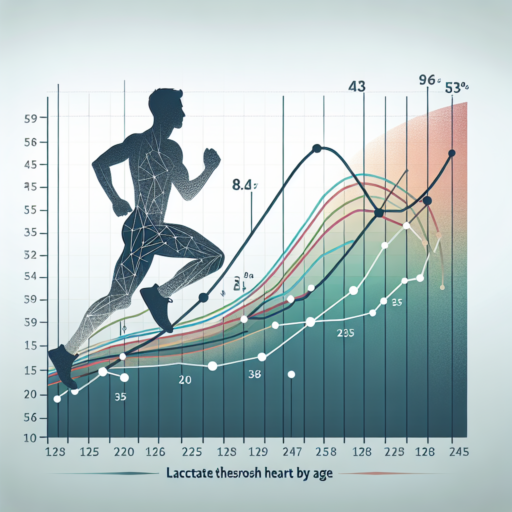What is a good lactate threshold heart rate?
Understanding your lactate threshold heart rate is essential for optimizing endurance training and maximizing performance. The lactate threshold (LT) is the intensity at which lactate begins to accumulate in the blood. This is a pivotal point in training, as it marks the shift from predominantly aerobic energy production to more significant anaerobic energy contributions. But what exactly constitutes a good lactate threshold heart rate?
In essence, a good lactate threshold heart rate is specific to each individual, influenced by factors such as age, fitness level, and training history. Generally, it is observed that well-trained athletes can operate at a higher percentage of their maximum heart rate near their LT, indicating better endurance and the ability to sustain higher intensities for longer periods. For most individuals, the LT occurs at 60-80% of their maximum heart rate, though this range can significantly vary.
To accurately identify your lactate threshold heart rate, undergoing a structured test in a lab or using field tests under the guidance of a professional can provide invaluable insights. This threshold is not static and can improve with targeted training, stressing the importance of periodic reevaluation to adjust training zones and optimize performance outcomes effectively.
No se han encontrado productos.
Is a 170 lactate threshold good?
Understanding the significance of a 170 lactate threshold essentially revolves around athletes’ performance and endurance capacities. The lactate threshold (LT) represents the intensity at which lactate begins to accumulate in the blood faster than it can be removed. This threshold is critical for determining an athlete’s stamina and how well they can perform over time, especially in endurance sports.
A 170 lactate threshold is often considered a good indicator for endurance athletes such as runners, cyclists, and triathletes. This number suggests that the individual has a high level of aerobic fitness, allowing them to sustain a relatively high intensity of exercise without accumulating a debilitating level of lactate. However, it’s crucial to recognize that «good» is relative and should be considered in the context of factors like age, sex, sport, and individual fitness levels.
Improving your lactate threshold is a key goal for many athletes, with strategies including focused training sessions and proper nutrition. Training just below or at your lactate threshold is believed to be the most effective way of pushing this threshold higher, enabling longer periods of high-intensity performance without the fatigue associated with lactate buildup.
How do I know my lactate threshold heart rate?
Determining your lactate threshold heart rate (LTHR) is crucial for optimizing your training and improving your endurance performance. This specific heart rate level signifies the point during exercise at which lactate starts to accumulate in the blood faster than it can be removed—a key indicator of your exercise intensity. Knowing your LTHR allows you to tailor your workouts more precisely, aiming to improve both your speed and endurance by training at or just below this threshold.
Step-by-Step Guide to Identify Your LTHR
To accurately find your lactate threshold heart rate, you can follow a structured approach that involves a mix of preliminary preparation and a well-designed test protocol. Initially, ensure you are well-rested and in good health before attempting any testing. The process typically requires you to perform at a high-intensity effort for a prolonged period, usually around 30 minutes, under controlled conditions. Monitoring your heart rate throughout this test and observing the point at which it stabilizes while remaining in high-intensity effort can give you a close estimate of your LTHR.
Understanding the Importance of Accurate Measurement
Accurate measurement of your LTHR is essential for setting realistic training zones. Misjudging your lactate threshold can lead to training sessions that are either too easy and don’t improve your performance or too hard, leading to overtraining and potential injury. Athletes across disciplines, from runners to cyclists, use their LTHR to craft personalized training plans that push their limits without stepping over the boundary into counterproductive exertion levels.
Remember, while identifying your lactate threshold heart rate is a critical step in fine-tuning your training regimen, it is equally important to retest periodically. As your fitness level changes, so too will your LTHR, requiring adjustments to your training zones to match your improved endurance and speed capabilities.
What is a normal lactate threshold level?
When discussing lactate threshold levels, it’s crucial to understand that these values can significantly vary among individuals due to factors like fitness level, age, and training intensity. Typically, for most people, a normal lactate threshold occurs at 50-60% of their maximum oxygen uptake (VO2 max) for less trained individuals. In contrast, trained athletes may see their lactate threshold at a higher percentage of their VO2 max, around 70-80%.
The concept of lactate threshold is paramount in endurance sports and training as it indicates the intensity at which lactate starts to accumulate in the bloodstream faster than it can be removed—a tipping point that often marks the transition from relatively comfortable exertion to a more challenging and fatiguing exercise pace. Understanding one’s lactate threshold allows for more tailored and efficient training regimens, pushing the threshold higher and thus enhancing athletic performance.
Assessing one’s lactate threshold can be achieved through specific tests, typically involving incremental exercise tests in a controlled environment, such as cycling or running on a treadmill, with periodic blood samples to measure lactate concentration. This testing is helpful for setting realistic training and racing paces and for monitoring improvements in fitness and endurance capabilities over time.
Keep in mind, while the aforementioned percentages provide a general guideline, individual thresholds can significantly differ. Therefore, personal testing and consultation with a sports science professional or coach are highly recommended to accurately determine one’s lactate threshold and to devise an effective training program accordingly.




